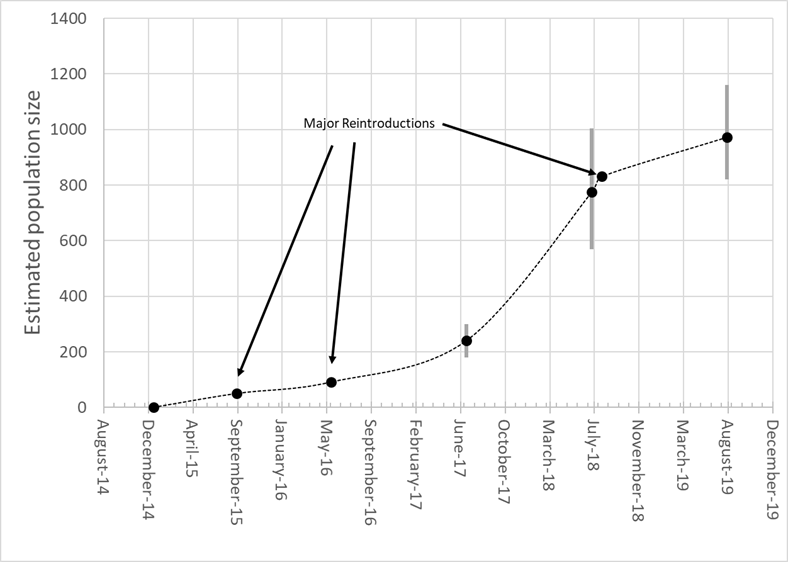Good news for Australia’s increasingly elusive small native mammals.
A recent AWC study published in the in the scientific journal, Ecological Management and Restoration, confirms that the endangered Woylie (Brush-tailed Bettong, Bettongia penicillata) population at Mt Gibson Wildlife Sanctuary is growing steadily. Data indicates that individuals are successfully breeding and their occupancy is expanding across the feral predator-free area, the largest on mainland Western Australia.
Woylies were once abundant across much of Australia but have been brought close to extinction, mainly due to predation by feral cats and foxes. The Mt Gibson project aims to increase global population size and expand their occupancy by supporting around 1,500 Woylies – around 10 per cent of the current estimated population.
A total of 262 Woylies have been translocated to Mount Gibson since 2015, as part of our most ambitious threatened mammal restoration program. The final 56 individuals were successfully translocated in 2018.
The most recent population estimate (August 2019) was just under 1,000 individuals, reflecting strong growth in population size and density.

Monitoring reintroduced Woylies
AWC scientists closely monitor all reintroduced mammals. However, monitoring Woylie populations can present some unexpected challenges.
Woylies are notoriously ‘bouncy’ animals with a propensity for making quick bolts for freedom, as ecologist Hamish Longbottom recently discovered at our Scotia Wildlife Sanctuary:
At Mt Gibson, many individuals of this species are particularly ‘trap happy’. This means that if a Woylie is trapped once then the same animal is likely to return to be trapped again.
While endearing, this behaviour is problematic for ecologists when trying to estimate population size.
In order to reduce bias from this ‘trap happiness’, AWC ecologists deploy multiple traps at each site and in some cases check traps twice per night. The data collected is used in statistical modelling (that takes into account the propensity for trap happiness) to estimate population size and spatial variation in the density of Woylies. The results indicate that the Woylies have spread across the feral predator-free area and population size increased from around 240 in 2017, to 760 in 2018, and to just under 1,000 in 2019.
Brighter future for endangered Woylies
We now protect at least 10 per cent of the world’s Woylies across four of our wildlife sanctuaries – Mt Gibson, Karakamia, Scotia and Yookamurra. AWC monitoring and research continues to confirm that the species is successfully breeding within these feral predator-free areas.
Next up, we plan to return Woylies to Mallee Cliffs and the Pilliga State Conservation Area in NSW, in partnership with the NSW Government under its Saving Our Species program. We also plan to reintroduce the species to Newhaven.
Please help us restore Australia's threatened mammals